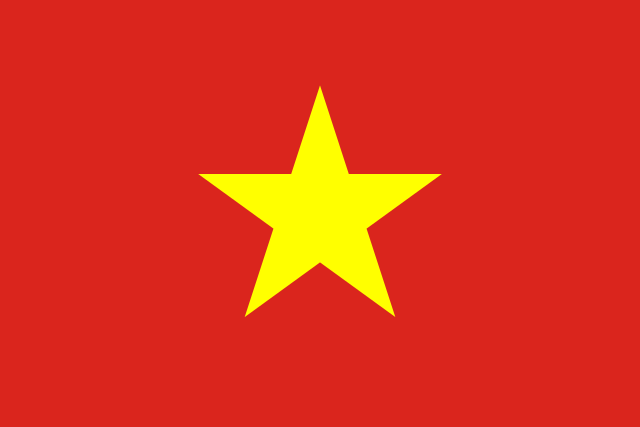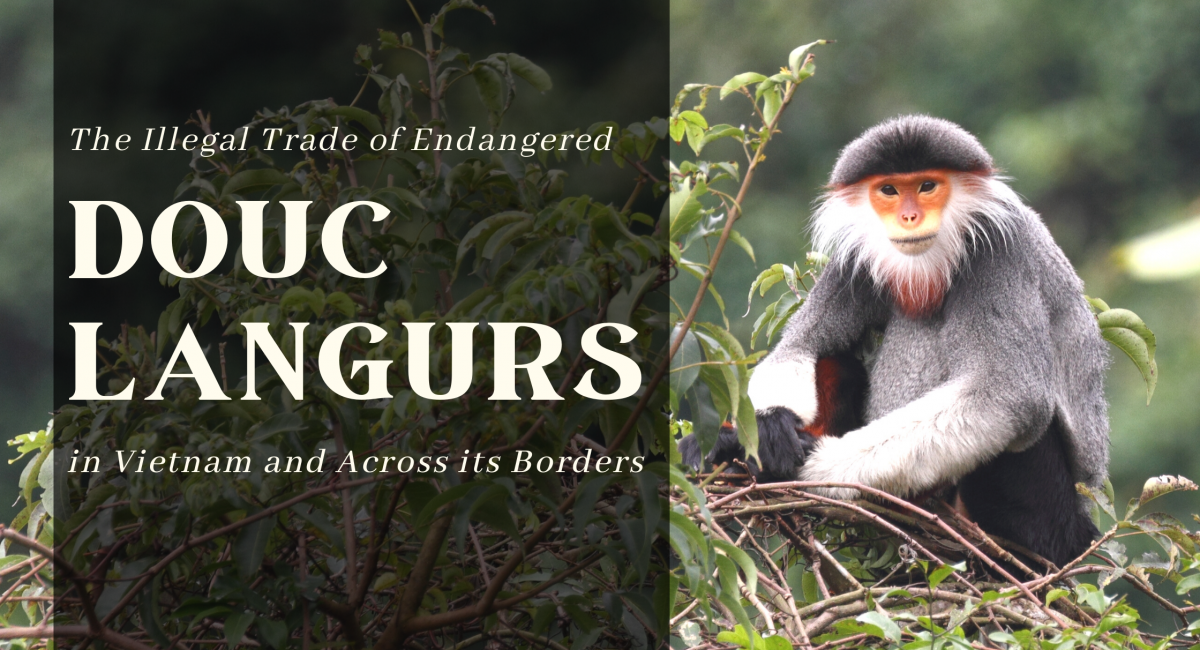
An urgent call for action to end the illegal trade of douc langurs (genus Pygathrix)
This is an urgent call for action to end the illegal trade of douc langurs (genus Pygathrix). There are three species of douc langur. All are critically endangered:
The douc langur’s future is threatened by deforestation and habitat loss (Nadler 2014a: 55). However, the illegal trade is another major factor in population decline. One of the main drivers of the douc langur trade in Vietnam and into China is for its use in a particular form of ‘Traditional Chinese Medicine’, also known as ‘bone glue’ or cao (Nadler, 2014b: 54). With each day that passes the douc langur’s chances of survival are diminishing.
Researching the Illegal Trade of the Douc Langur
My understanding of the plight of the douc langur and the impact of the illegal trade has grown through my research relationship with Education for Nature Vietnam (ENV).
I am a law lecturer and multi-disciplinary researcher living in Australia. In early 2018, I came across an article on ENV’s work in the Humane Society International Australia’s 2017 Campaign Report. At the time, I had recently completed a PhD focusing on animals and the law and had the opportunity to apply for a Central Queensland University new staff research grant.
I was inspired to reach out to ENV. My initial conversation with Doug Hendrie, ENV’s Chief Technical Adviser led to a grant proposal aimed at improving the understanding the illegal trade of douc langurs. In 2019, I spent five weeks at the ENV office, selecting case files for analysis, and talking to experts in douc langur conservation, wildlife protection policy, and traditional medicine practice. I developed a multidisciplinary method that drew on my background in legal research, anthropology, and community development.
Below, I introduce the douc langur and briefly discuss some of the findings of my analysis of two samples of ENV case files related to illegal trading and hunting seizures for these three species. While the full study will be discussed in a future publication, it is important to recognise the urgent need for stronger cross border prevention and enforcement strategies between Vietnam and its neighbours: Laos, Cambodia, and China.
The Douc Langur
Douc langurs (also known as ‘Douc’ or ‘Voc’) are found in Laos, Cambodia, and Vietnam, east of the Mekong River (Nadler and Brockman 2014: 173). The Doucs’ home is in the forest canopy, where they enjoy a diet of leaves, along with fruits, seeds and flowers; its composition changing with the seasons.

Under Vietnamese law, the three species of douc langur are protected under Decree 160/2013 (updated by Decree 64/2019) and Decree 06/2019 ND-CP: 1B. Offences against regulations for the management and protection of these critically endangered animals are found in Vietnam’s revised Penal Code (No. 12/2017/QH14). These protections reflect Vietnam’s commitment to the Convention on International Trade in Endangered Species of Wild Fauna and Flora (CITES).
Distribution and Population
Douc langurs are very habitat dependent, and each species has a specific geographical distribution across Vietnam, Laos, and Cambodia (see Nadler and Brockman 2014; International Union for the Conservation of Nature (IUCN) 2021).
The red-shanked douc langur occurs in ‘east-central Laos, as well as northern and central Vietnam’ (Nadler and Brockman 2014: 175-176; Nadler et al 2007: 17-18). There is also a small population in north-eastern Cambodia (Nadler and Brockman 2014: 175; Courdat et al 2012). Laos has the largest population in the region (Courdat et al 2012: 876), with the Nakai-Nam Theun National Protected Area probably holding ‘the world’s largest population with an estimate of at least 4,500 groups in the area’s suitable habitat’ (Courdat et al 2020: 4). Populations in Vietnam are small and fragmented (Nadler and Brockman 2014: 175). While ‘it is likely that the largest population’ is in Quang Binh province, ‘estimated at 445-2137 individuals’, Nadler and Brockman caution that these numbers are ‘probably overestimates’ (2014: 175)
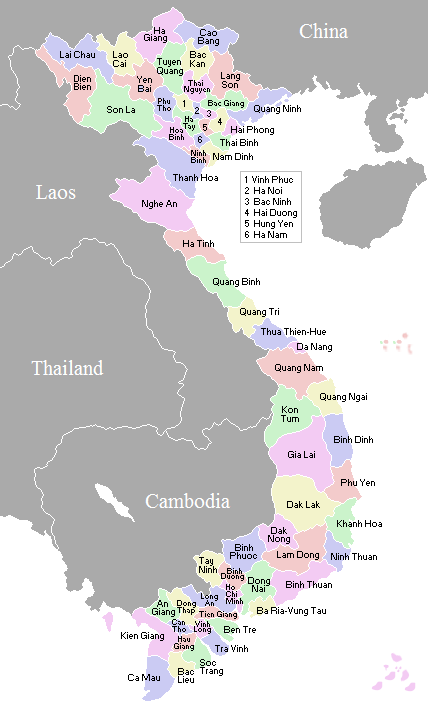
Source: Vu X-B, Nguyen D-T, Smith C & Nghiem H-S (2015) Vietnam’s responses to provincial economic disparities through central provincial government financial relations. Australasian Journal of Regional Studies 21(1) 104-137.
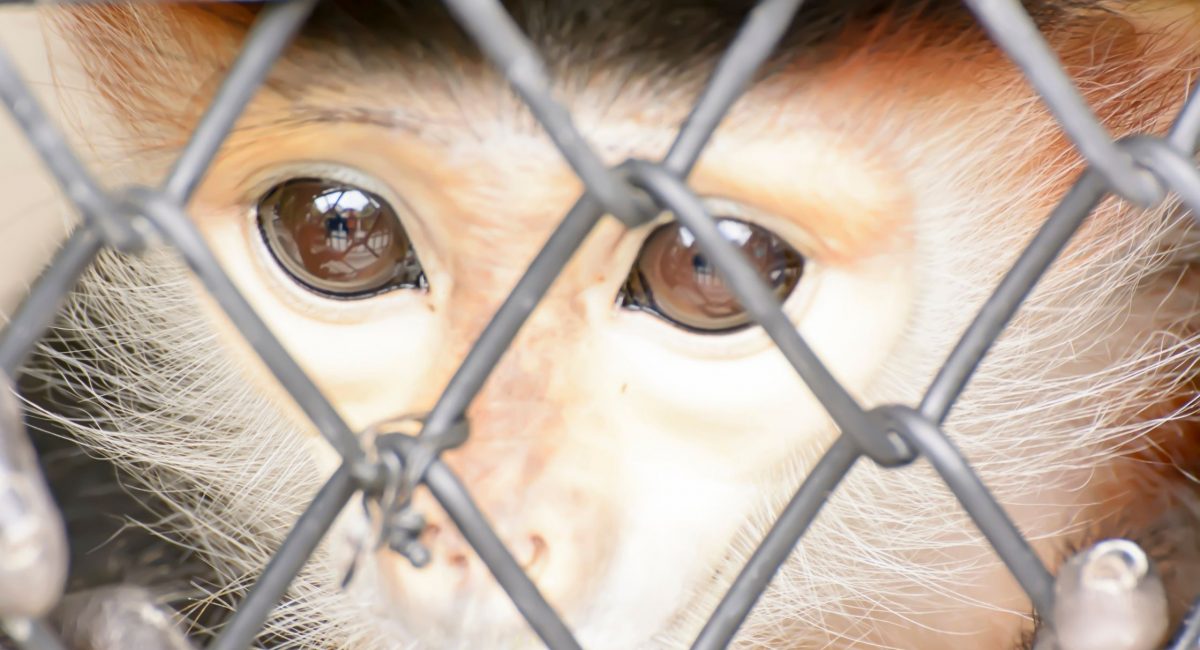
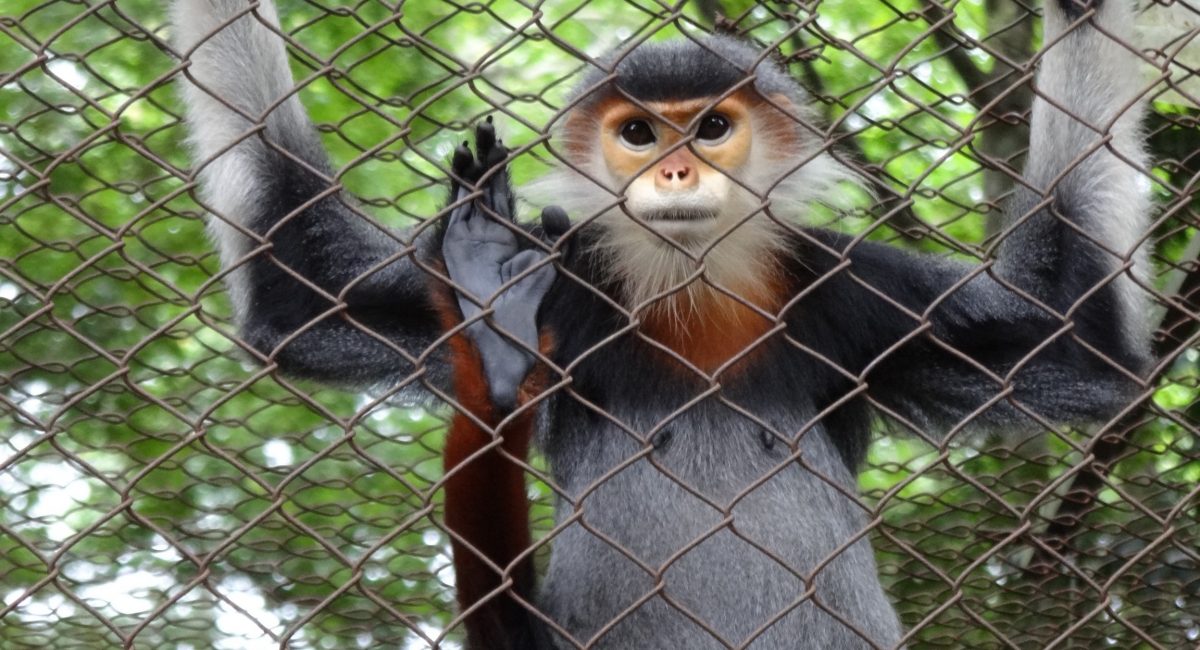
The grey-shanked douc langur is found ‘in fragmented populations of Vietnam’s central highlands’ (Nadler and Brockman 2014: 183-184). The species’ population is ‘estimated at 550-700 individuals’ (Nadler and Brockman 2014: 183; Vu et al 2019: 2). However, as some suitable habitat areas have not been surveyed, the entire population is estimated at approximately ‘1450-1700 individuals’ (Long et al 2020: 4).
The black-shanked douc langur is found in eastern Cambodia and southern Vietnam (Nadler and Brockman 2014: 191). In Vietnam, populations are fragmented and small (Nadler and Brockman 2014: 191-192). The largest population in the region, estimated to be 40 000 individuals, is in the Seima Biodiversity Conservation Area of Cambodia’s Mondulkiri province (Nadler and Brockman 2014: 191). While superficially this population estimate may seem large, the ongoing and rapid population decline (Duc et al 2020: 1) is of great concern and underlies the black-shanked douc langur’s critically endangered status.
Case File Analysis Findings Summary
Trading seizures in the northern provinces
All bar one seizure in the northern provinces involved black-shanked douc langurs, whose natural habitat is in the southern provinces of Vietnam, and eastern Cambodia. The seizures in Cao Bang, Ha Noi, and Bac Kan were all destined for China. Overall, seizure locations in the northern provinces were transit points, with China as the ultimate destination. The black-shanked douc langurs seized in Vietnam originated from southern Vietnam and probably Cambodia’s Mondulkiri province. The conclusion that the source points for the trade included eastern Cambodia was supported by qualitative information contained in the case files.
Trading seizures in the central provinces
The trading seizures in the central provinces brought supply across the border of Laos into the douc langur trading picture, and strongly suggested Kon Tum as a douc langur trading hotspot, or major transit point for south and central Vietnam.
Trading seizures in the southern provinces
All seizures in the southern provinces involved black-shanked douc langurs. Dak Lak was the reported purchase location in the largest trading seizure (108 douc langurs) and another case in Dak Lak involved 13 black-shanked douc langurs. Several cases portrayed border crossings into Cambodia for hunting and trade into Vietnam.
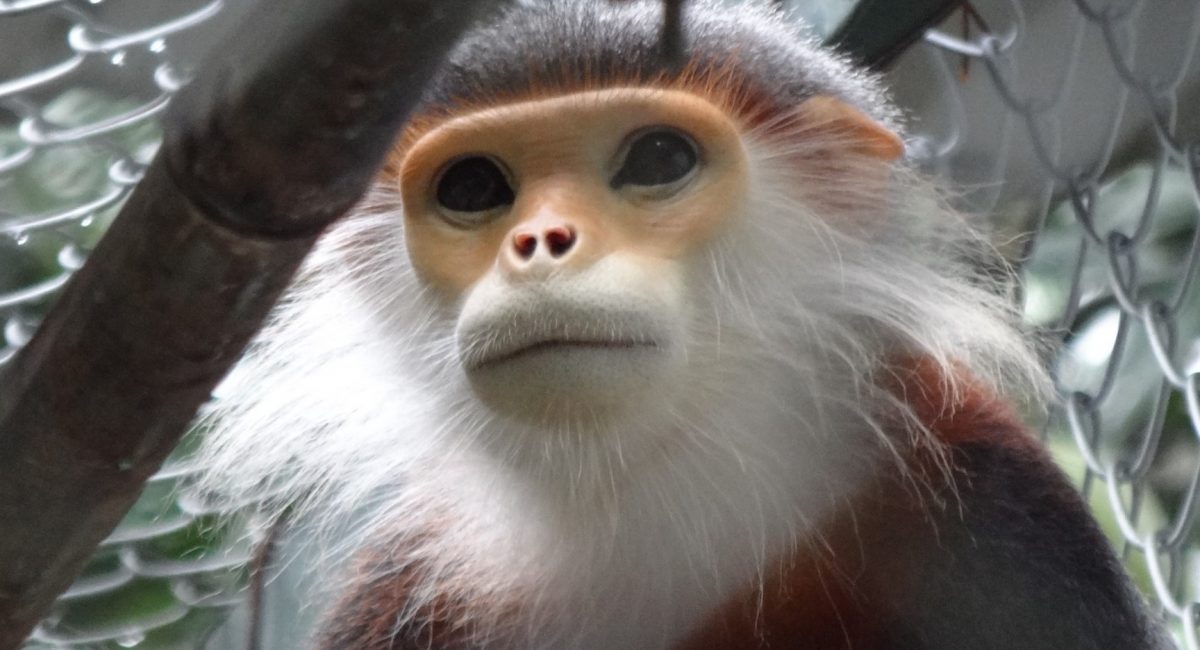
Implications
The results of this study frames Vietnam as a transit as well as a source country for the illegal douc langur trade. Urgent attention is required to detect and prevent hunting of all three douc langur species and the trade of them and their body parts across:
- the Vietnam–Laos border;
- the Vietnam-Cambodia border, especially in areas close to the Seima Biodiversity Conservation area;
- in Binh Phuoc, especially in Bu Gia Map National Park, and
- in Cat Tien National Park.
The overall movement of douc langurs from south to north Vietnam in the trading cases, and the prevalence of hunting in the southern provinces, indicates that prevention strategies ought to focus on these ‘up-stream’ points of hunting and trading. As part of this, there is a need for ongoing, coordinated, and collaborative enforcement strategies between Cambodian, Laotian, Chinese, and Vietnamese enforcement authorities, as well as targeted community awareness and education campaigns in these areas.
I look forward to continuing my connection with Education for Nature Vietnam to support its commitment to combatting the illegal wildlife trade.
Dr Alexandra McEwan
Lecturer: Law
The College of Law, Criminology, and Justice
Central Queensland University (Melbourne Campus)
Australia
Email: a.mcewan@cqu.edu.au
14th April 2021
References
Courdat C N Z, Duckworth J W & Timmins R D (2012) Distribution and conservation status of the Red-Shanked Douc (Pygathrix nemaeus) in Lao PDR: an update. American Journal of Primatology 74(10) 874–889. Doi: https://doi.org/10.1002/ajp.22027
Courdat C N Z, Quyet L K, Duc H, Phiaphalath P, Rawson B M, Nadler T, Ulibarri, L & Duckworth J W (2020) Pygathrix nemaeus. The IUCN Red List of Threatened Species 2020: e.T39826A17941247. https://dx.doi.org/10.2305/IUCN.UK.2020-2.RLTS.T39826A17941247.en
Duc H, Quyet L K, Rawson B M, O’Brien J & Covert H (2020) Pygathrix nigripes. The IUCN Red List of Threatened Species 2020: e.T39828A17941480. https://dx.doi.org/10.2305/IUCN.UK.2020-2.RLTS.T39828A17941480.en
International Union for Conservation of Nature (2021) International Union for Conservation of Nature Red List of Threatened Species https://www.iucnredlist.org/
Long H T, Duc H, Quyet L K, Rawson B M, Nadler T & Covert H (2020) Pygathrix cinerea. The IUCN Red List of Threatened Species 2020: e.T39827A17941672. https://dx.doi.org/10.2305/IUCN.UK.2020-2.RLTS.T39827A17941672.en
Nadler T, Vu N T & Streicher U (2007) Conservation status of Vietnamese primates. Vietnamese Journal of Primatology 1, 7-26.
Nadler T (2014a) Habitat disturbance and loss, and the primates of Vietnam. In T Nadler and D K. Brockman (eds.) Primates of Vietnam (Endangered Primate Rescue Centre) (pp. 55-60).
Nadler T (2014b) Primates in traditional medicine. In T Nadler and D K. Brockman (eds.) Primates of Vietnam (Endangered Primate Rescue Centre) (pp. 51-54).
Nadler T & Brockman D K (2014) Douc Langurs. In T Nadler and D K. Brockman (eds.) Primates of Vietnam (Endangered Primate Rescue Centre) (pp. 172-296).
Vu T, Tran D V, Tran H T P, Nguyen M D, Do A T, Ta N T, Cao H T, Pham N T & Phan D V (2019) An assessment of the Impact of Climate Change on the Distribution of the Grey-shanked Douc Pygathrix cinerea using an Ecological Niche Model (2019) Primates 61, 267–275 https://doi.org/10.1007/s10329-019-00763-8).
Vu X-B, Nguyen D-T, Smith C & Nghiem H-S (2015) Vietnam’s responses to provincial economic disparities through central provincial government financial relations. Australasian Journal of Regional Studies 21(1) 104-137.
